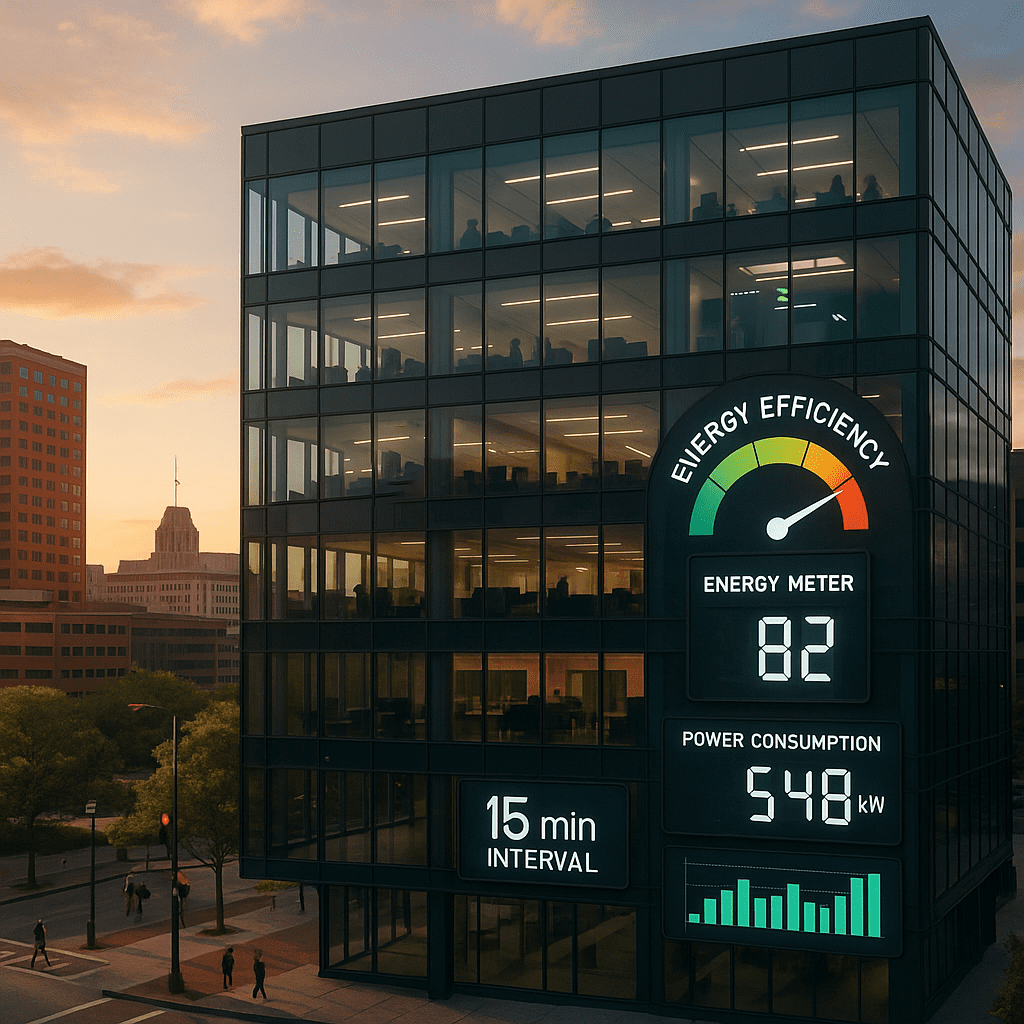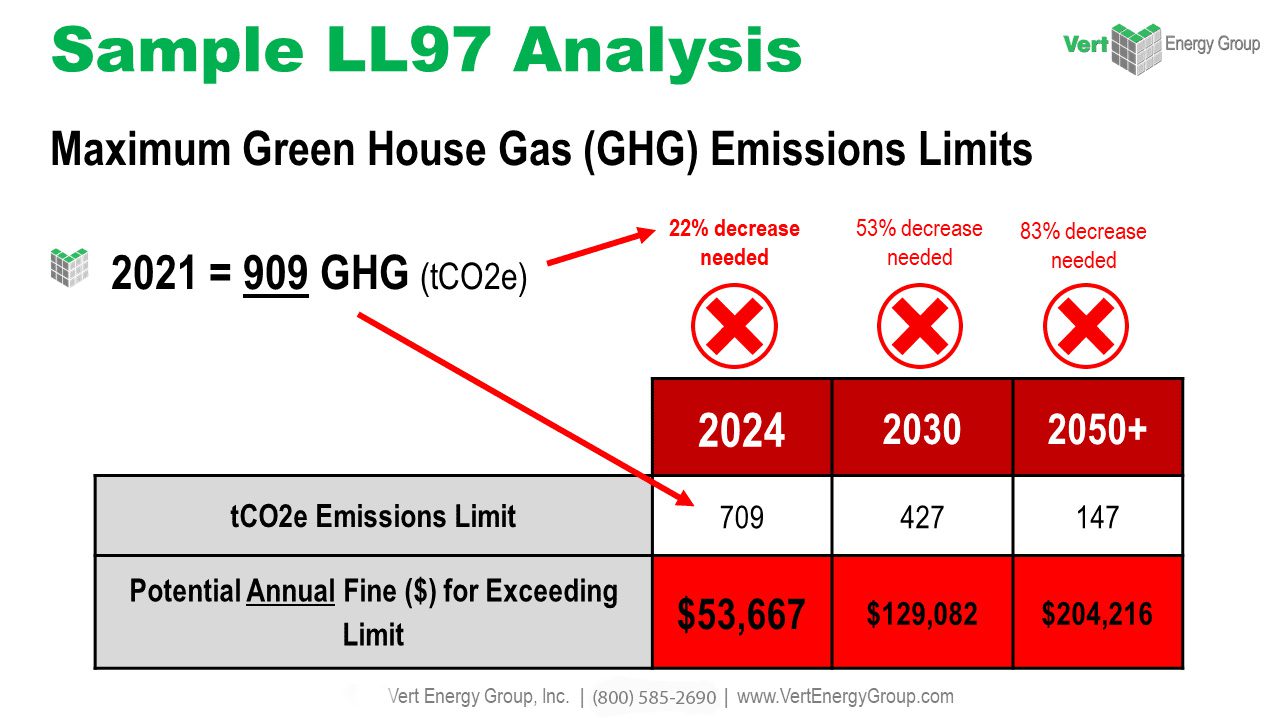Maryland building owners are at risk of owing steep penalties starting 2026.
If you own or manage a commercial or multifamily building in Maryland, especially in Montgomery County, you need to pay attention. The rules under Maryland’s Building Energy Performance Standards (BEPS) and Montgomery County’s benchmarking law are in effect (and you could be at risk of missing deadlines and owing fines). 2025 is more than halfway over. Time is running out to collect and report your 2024 energy data.

These laws aren’t about following rules. They don’t just help you avoid fines. They show you ways to save on your energy usage and costs. We wrote this short guide to show you:
- Who needs to follow the rules
- When to report
- How to stay on track.
From using the ENERGY STAR® Portfolio Manager to getting your data verified, we’ll explain all the steps you need to take before penalties start.
Understanding Maryland’s Building Energy Performance Standards (BEPS)
Maryland passed the Climate Solutions Now Act of 2022,. From this came the BEPS program. The BERPS program mandates energy benchmarking for large buildings statewide. The initiative is designed to improve building performance and help the state meet long-term emissions goals.
Key Points:
- Applies to commercial and multifamily buildings ≥ 35,000 square feet.
- Requires annual benchmarking using ENERGY STAR Portfolio Manager.
- First reports (using 2024 data) were due June 1, 2025; with a one-time extension to September 1, 2025.
- Ongoing annual deadlines are June 1 of each year starting 2026.
- Verification of energy data by a third-party professional is required every five years.
Montgomery County Benchmarking Requirements
Montgomery County has its own benchmarking law (Bill 16-21). This law predates BEPS and has stricter building size thresholds. Here’s what you need to know.
Requirements:
- Applies to private and multifamily buildings ≥ 25,000 square feet.
- County-owned buildings ≥ 10,000 square feet must also report.
- Annual benchmarking reports are due June 1 each year.
- Third-party verification is required every 3 years.
- Non-compliance may result in Class A violations, with fines up to $500 per day for initial violations and $750 per day for repeat offenses.
Montgomery County enforcement applies along with BEPS. What that means for you is you must comply with both sets of rules if your building falls within both jurisdictions.
Who Needs to Report?
You must benchmark and report if your building falls into one of the following categories:
Statewide (Maryland BEPS):
- Commercial and multifamily buildings ≥ 35,000 ft²
- Excludes schools, parking structures, agricultural buildings, and certain government properties
Montgomery County:
- Private commercial/multifamily buildings ≥ 25,000 ft²
- County buildings ≥ 10,000 ft²
If your building meets the criteria, you’ll need to report data from calendar year 2024 (for the 2025 submission), and every year after 2025.
Key Deadlines: What to Watch For
Maryland Statewide BEPS
- Initial reporting deadline: June 1, 2025 (extension to Sept 1, 2025)
- Ongoing reports due: June 1 every year starting in 2026
- Verification: Every 5 years starting with 2025 data (due in 2026)
Montgomery County
- Annual report deadline: June 1 (aligns with state)
- Verification: Every 3 years, starting 2024 for buildings ≥50,000 ft² and 2025 for ≥25,000 ft²
- Penalties: Up to $500/day initially; higher for repeated violations
How to Submit Your Benchmarking Report
Both Maryland and Montgomery County require use of the ENERGY STAR® Portfolio Manager, a free tool used to track and submit building energy data. Here’s a step-by-step guide on how to start your account, what to add to it, and how to submit.
Step-by-Step Reporting Checklist:
- Create or update your Portfolio Manager account
- Enter building details (square footage, usage type, occupancy)
- Collect and upload 12 months of utility data (electricity, gas, water where applicable)
- Verify all utility meters are included
- Run data quality checks
- Submit your benchmarking report to the appropriate portal(s)
- Schedule third-party verification based on your reporting cycle
Tip: Buildings with multiple tenants may need to coordinate access to tenant utility usage, which can require extra time.
Penalties for Non-Compliance
State and county fine enforcement is serious. Miss a deadline and your fines quickly stack up. Here’s an overview of all the fines.
Montgomery County:
- Non-compliance is classified as a Class A civil violation
- Fines up to $500/day for initial violations
- $750/day for repeat offenses
- Additional penalties apply for missing third-party verification
Maryland State BEPS:
- Non-compliance may trigger alternative compliance payments or restrictions under the performance standards
- Repeated failure may result in stepped enforcement, especially after the first five-year performance assessment window
Avoid These Common Mistakes
Property owners end up paying fines because they make simple mistakes. We have worked with hundreds of property owners and found these are the most important things to avoid:
- Missing the June 1 deadline (you can recover your compliance if missed)
- Incorrect or incomplete utility data
- Forgetting third-party verification
- Assuming county/state rules are interchangeable
- Failing to include tenant or common area loads
Benchmarking is a technical process. Hiring a qualified consultant ensures accurate, compliant reporting.
Why Benchmarking Is Good for Business

Benchmarking isn’t another law. Long-term, benchmarking improves your building’s performance and valuation by:
- Reducing utility costs by identifying inefficiencies
- Improving building performance over time
- Enhancing asset value and marketability
- Helping attract ESG-conscious tenants
- Preparing you for performance standards and emissions caps
Benchmarking also positions you for potential incentives, tax credits, and energy efficiency funding. If you’re interested in see what you qualify for and how much you can get our team of experts can help. Visit the bottom of this article to access a member of our team to talk to for finding and qualifying for rebates and incentives.
FAQ: Maryland Energy Benchmarking 2026
- What buildings must comply with Maryland’s energy benchmarking law?
All commercial and multifamily buildings ≥ 35,000 ft². County-level laws (like Montgomery’s) apply to smaller buildings starting at 25,000 ft². - What happens if I miss the June 1 deadline?
You may face daily fines (up to $500 in Montgomery County), corrective notices, or enforcement actions. In repeated cases, compliance orders may be issued. - Is “Class C” a legal building type under the law?
No. “Class C” is a real estate term, not used in legal enforcement. What matters is your building’s size and usage type. - What if I can’t collect all my utility data?
Estimated or partial data is not accepted. You must use actual consumption data. Incomplete reports may be rejected or flagged. - Do I need a third party to help?
While not legally required, most owners hire professionals to handle reporting and verification, especially for large portfolios or buildings with tenant data complexity.
Don’t Wait—Start Your Benchmarking Journey Today
Fine enforcement is ready to start issuing fines. Both Maryland and Montgomery County have set deadlines for reporting. Starting early is the best way to avoid fines and stress. Whether you manage a 25,000 ft² office in Bethesda or a 100,000 ft² apartment building in Silver Spring, the steps to compliance are clear, and now is the time to act.
VertPro® can help you at every step. From collecting energy data and setting up ENERGY STAR® to getting third-party verification and submitting reports automatically, our platform makes benchmarking easy.
✅ Ready to get started?
Book a free consultation with our energy compliance experts today.
At VertPro.com, we offer tools and services that help building owners and managers meet energy rules and improve energy use. Whether you need fast pricing on energy audits, help with benchmarking, or ideas for building upgrades, VertPro® makes the process simple. Our platform supports compliance with over 60 Energy Benchmarking and Efficiency Laws across the U.S.















